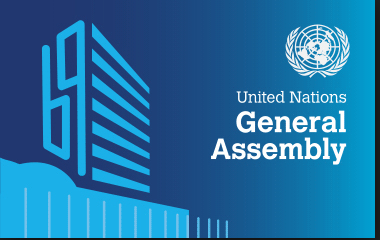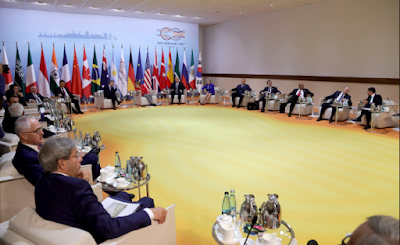The general assembly
Composition
If the
present international society were to be compared with a nation state, the UN
General assembly could be help on represent a parliament in which the affairs
of the world are debated and discussed by representatives of every region.
But the assembly is not yet a world
parliament in my real sense. It has no government. The UN agencies are not
ministries, they do not come directly under the general assembly; they have
their own assemblies and decide their own policies, and the UN general assembly
has only the most transitory power or influence over each. Still less are the
member states committed to obey the assembly’s resolutions. So the assembly can
discuss or recommend but rarely decide.
Again the general Assembly is not representative of peoples in the way an elected parliament is today supposed to be. It is representative of governments, and these may or may not themselves represent accurately the views of their own populations. Governments are represented on a highly uneven basis, with a nation of 50,000 people having the same representation as one of 500 million.
At the beginning of each regular session, the Assembly holds a general debate in which the member states express their Views on a wide range of matters of international concern. Due to the great number of questions which the Assembly is called upon to consider (there were 154 separate agenda items at the 1988 session of the Assembly,) for example, the Assembly allocates most questions to its seven main committees:
- First Committee (disarmament and related international security matters
- Second Committee (economic and financial matters)
- Third Committee (social, humanitarian and cultural matters)
- Fourth Committee (decolonisation and political matters)
- Fifth Committee (administrative and budgetary matters)
- Sixth Committee (legal matters)
There 15 also a General Committee composed of the President and 21 Vice-Presidents of the Assembly and the chairmen of the six main committees, and a Credentials Committee appointed by the President at each session.
While the decisions of the Assembly have no legal binding force on governments, they carry the weight of world opinion on major international issues; as well as the moral authority of the world community.
The work of the United Nations round the year is derived largely from the decisions of the General Assembly, that is to say, the will of the majority of the members as expressed in resolutions adopted by the Assembly. That work is carried out:
- By committees and other bodies established by the Assembly to study and report on specific issues. such as disarmament outer space, peacekeeping, decolonisation, humans rights and apartheid;
- In international conferences called by the Assembly and apartheid.
- By the Secretariat of the United Nations the Secretary General and his staff of international civil servants.
Agenda
Besides the usual items (which differ from year to year), the General Assembly has to include in its agenda in each session the report of the Secretary-General which has to be discussed, as well as the reports of the Secretariat, the ECOSOC and the Trusteeship Council. Reports frOm the various subsidiary organs and specialised agencies also form part of its agenda as well as anything that has been left over ‘ from the previous session and needs continuous discussion. Any subject proposed by the principal organs, the Secretary-General and the members which are substantive in nature, have also to be included, though the General Assembly has the right to reduce them to five in number. Along with this, a discussion of the budget has to take place and any item brought by non-members is also to be considered.
The agenda covers a Wide, expanding and increasingly specialised range of topics. In recent years agendas have covered subjects ranging from the situation in the Middle East to the ”question Of the elderly and the aged”, a comprehensive review of peacekeeping operations to the establishment of an international university, the braindrain from developing countries to the question of human environment, the seabed to the outer space, the punishment of war criminals to international trade law. Thus there exists in the Assembly a meeting place where it is possible to discuss international issues of this kind which might not become _ the subject of a full-scale international conference. On the other hand, discussion of such an array of subjects, which are often technical, places a considerable strain on the resources of the delegations, especially of the smaller member states, the increasing complexity and technical character of the issues discussed, and the difficulty of the delegates in keeping abreast of them reflect problems similar to those confronting national parliaments. Inevitably, debates lasting two or three days on large issues of this kind are inadequate to deal with them. The purpose, in the eyes of the delegates, is probably to focus attention on urgent needs or pressing issues and sometimes they are indeed followed by more expert conferences to obtain even more concrete results.

.png)








No comments:
Post a Comment